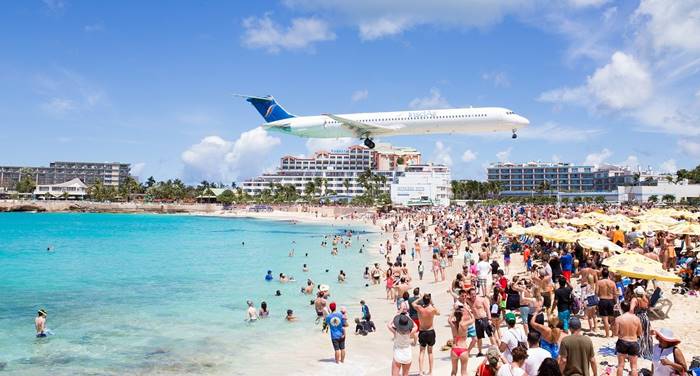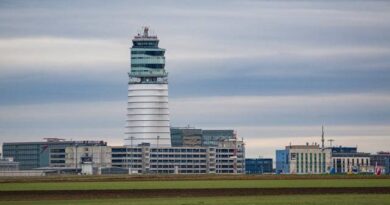Demystifying Jet Blast: The Powerful Force Behind Takeoff and a Crucial Safety Concern
Understanding the Science and Staying Safe Around Jet Engines
Have you ever witnessed the awe-inspiring spectacle of a jet taking off, propelled by the roaring engines? While this phenomenon seems magical, the science behind it involves a powerful force called jet blast.
What is JB?
Jet blast is the high-velocity stream of air forcefully expelled from the rear of jet engines. This air, essentially superheated and accelerated, is what propels the airplane forward by generating thrust. While crucial for flight, jet blast also presents significant safety concerns on the ground due to its immense power.
How Strong is Jet Blast?
The sheer force of jet blast is no exaggeration. Large jet engines can generate winds exceeding 100 knots (190 km/h), comparable to a hurricane, even at moderate engine power settings. This powerful blast can extend up to 200 feet (60 meters) behind the aircraft, creating a hazardous zone.
The Potential Dangers of JB
The immense force of jet blast can:
- Knock over people and objects: The wind force can easily overpower individuals and send objects flying, potentially causing serious injuries or property damage.
- Damage ground equipment and vehicles: Unsecured equipment and vehicles in the JB zone are at risk of being tossed around or even flipped over, leading to significant damage.
- Create wind shear: This is a sudden and dangerous shift in wind speed and direction that can disrupt the flight path of other aircraft, particularly smaller ones, during takeoff and landing.
Where is Jet Blast Most Dangerous?
Understanding the areas where jet blast poses the biggest threat is crucial for ensuring safety:
- Runways and taxiways: During takeoff, landing, and taxiing, the jet blast zone is present behind the aircraft, posing a risk to ground personnel and equipment.
- Airport aprons: This is the area where aircraft are parked, loaded, and unloaded. Ground crews and equipment operating here are particularly vulnerable to jet blast if proper safety measures are not followed.
Staying Safe Around Jet Blast:
While jet blast presents potential dangers, it’s important to remember that airports prioritize safety. Here are some key steps you can take to stay safe:
- Always follow safety instructions and signage: These are prominently displayed at airports to guide you on safe distances from operating aircraft and other crucial precautions.
- Maintain a safe distance: As marked on the ground, ensure you stay clear of the designated JB zones, especially behind aircraft engines.
- Secure loose objects: Anything that can be blown around by the wind, such as hats, papers, or lightweight equipment, should be secured to prevent them from becoming projectiles.
- Be aware of your surroundings: Pay close attention to the wind direction and avoid standing in the direct path of the jet blast, even if you feel you are at a safe distance.
Due to the jet blast effect, people and/or vehicles may roll over and be damaged. It effect can be felt more severely, especially where the runways are close to places where people may stay on.
Princess Juliana International Airport and JB
Princess Juliana airport, located on the island of St Maarten in the north east of the Caribbean Sea. It is one of the places where the JB effect is most clearly experienced. Due to the location of the airport, planes descend from the beach side which is too close to runway and land after a very short time. Since the runway is very close to the beach, people on the beach can easily experience the jet blast effect during take-off.

Princess Juliana draws the attention of adventure lovers, planespotters and photographers with these features. However, this situation poses a great danger to aviation safety. The airport is seen as one of the most dangerous airports in the world for pilots.
By understanding the power and potential hazards of JB, we can contribute to a safe environment for everyone working, operating, and traveling at airports
For more articles click.
References and Further Reading:
- Federal Aviation Administration (FAA) Advisory Circular 150/5210-16e: Obstructions to Air Navigation (deals with JB as a potential hazard near airports) – https://www.faa.gov/
- Air Transport Association (ATA) Specification 100, Aircraft Towing and Taxi Operations (includes guidance on safe ground operations around JB) – https://publications.airlines.org/CommerceProductDetail.aspx?Product=33
- International Civil Aviation Organization (ICAO) Annex 14, Aerodromes (establishes international standards for airport design and safety, including considerations for JB) – https://www.icao.int/APAC/Meetings/2015%20WAWG1/an14_1ed_1951.pdf
- “A safety-based approach to assess JB at aerodromes” by airsight GmbH (research paper exploring JB assessment methods and safety considerations) – https://www.airsight.de/projects/item/a-safety-based-approach-to-assess-jet-blast-at-aerodromes/


